Gin is very different from any other of the major spirit types. No matter if you compare it to Whiskey, Brandy, Rum, Tequila, or Vodka. None of these has a similar array of flavors under their belt, but why?
Unlike the said liquors, Gin is flavored with a set of botanicals. The amount, selection, and ratios vary from Gin to Gin. The only Gin botanical that is a fixture is juniper. Without juniper, Gin would be Vodka - more or less.
Some core botanicals go into almost every Gin, some are quite common, still, and part of most Gins, and then there are rare and unique botanicals - often regional - used in a few Gins only. But let's start by finding out what botanicals are.
What is the meaning of botanicals?
In general, a botanical is a plant or part of a plant used due to its medicinal properties, its taste, or scent. Botanicals can be anything from the whole plant to petals, stalks, fruits, roots, and even barks.
In Gin, botanicals are used as flavoring ingredients to create a distinct aroma and flavor profile by combining various botanicals that work well together.
How many botanicals are used in a Gin?
There's no limitation on how many botanicals go into a Gin. Some brands only take a few ingredients, while others use a much bigger selection. Some prominent examples are Tanqueray, made with only four botanicals, and Monkey 47, on the upper end of the scale, flavored and infused with 47 different ingredients.
On average, a Gin contains 6-12 different botanicals. Almost all major brands like Hendrick's (11 botanicals), Bombay Sapphire (10), Beefeater (9), and Sipsmith (10) fall into this range.
How botanicals change the flavor of Gin
We know what botanicals are and how many go into a Gin, but how are they altering the taste of a Gin? When are they added - and how?
There are three common ways:
- Maceration
- Distillation
- Cold-compounding
The most common way to infuse the base spirit of Gin with botanicals is maceration. For this, botanicals are steeped in the base spirit for a few hours up to a few days. The alcohol soaks up the taste and obtains its distinct flavor. After maceration, the base spirit gets distilled.
The distillation can be performed with botanicals or without. Some brands even skip the maceration part and throw in the botanicals only before distillation. One of these brands is Tanqueray, made from juniper berries, coriander seeds, angelica root, and licorice.
After distillation, a Gin can be flavored with additional botanicals or essences of natural origin. This technique is called cold-compounding. Gins that skip the distillation step and only use cold-compounding to flavor the Gin are so-called Bathtub or Compound Gins.
What are the most important Gin botanicals?
The primary botanical in Gin is juniper. It's the only ingredient legally required to be part of the recipe. Flavorwise, juniper shows itself in Gin with a piney, spicy, and herbaceous flavor. It's also often described as slightly waxy and resinous.
Besides juniper, there are two to three additional botanicals that belong to the essential list of ingredients. This "Holy Trinity of Gin Botanicals" consists of juniper berries, coriander seeds, and angelica root. Coriander adds warm and citrusy notes, while angelica adds earthiness to the flavor profile.
Some people also consider citrus peel (mostly lemon) an essential botanical in Gin. In that case, the selection of Gin botanicals is referred to as the "Fab Four".
In addition to these four, a large variety of Gins contains other ingredients, as well. Here's a list of the 14 most common Gin botanicals:
- Juniper berries
- Coriander seeds
- Angelica root
- Lemon peel
- Orange peel
- Cardamom
- Licorice
- Orris root
- Cassia bark
- Cinnamon
- Nutmeg
- Grains of paradise
- Cubeb pepper berries
- Almond
Important Gin botanicals explained
There are hundreds of botanicals used in Gin. Describing and explaining every single one probably takes a lifetime. To get you started, though, we picked the most common ones and explain how they affect the taste of the final result.
Juniper berries
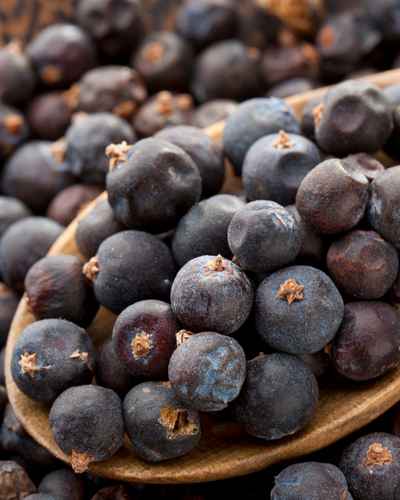
Juniper berries are a must. These blue-colored berries are mostly harvested in Europe and Asia and are typically used in dried form. Gin producers often store them for one or two years before using them to produce Gin.
In Gin, juniper berries have a distinct piney flavor, spicy notes, and an almost peppery finish.
Gin that has a noticeable juniper flavor: Any classic London Dry Gin has a pronounced juniper aroma and taste. In fact, any Gin will have a more or less pronounced juniper note to it since it is a legal requirement.
Yet, some brands put juniper more in the spotlight than others. Try Junipero Gin, Sipsmith's VJOP, or a classic Tanqueray London Dry Gin to get an idea of how a juniper-forward Gins tastes.
Coriander seeds
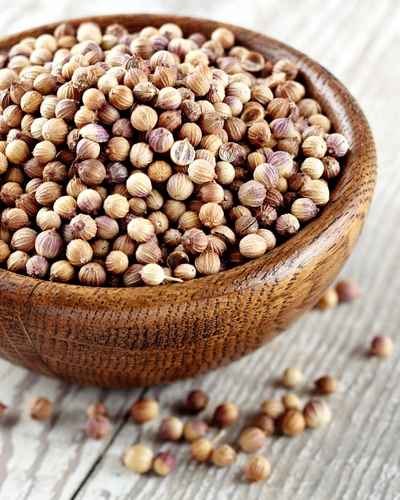
Coriander seeds are part of the Holy Trinity of Gin Botanicals and can be found in almost every Gin. The essential oils contained in these seeds are the main reason for their distinct aromatic, spicy, and slightly citrusy taste.
In a Gin, coriander is mostly noticeable as a subtle citrus note and often shines through toward the finish. If you taste citrus notes right at the beginning, the Gin most likely used citrus peels as an additional ingredient.
Gin that has a noticeable coriander seeds flavor: Finding a Gin that's coriander-forward is a challenge. However, Tanqueray London Dry Gin is probably the best way to detect the subtle citrus notes that come through after the distinct piney juniper flavors.
Angelica root
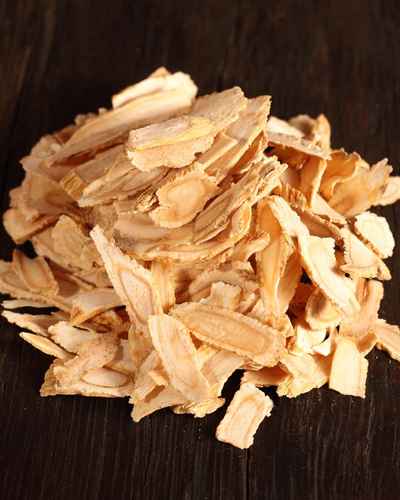
Angelica root is another key botanical in Gin that brings a subtle earthy flavor. Furthermore, angelica is used to marry all the other flavors of a Gin together and help the spirit to gain substance. Some use angelica seeds, either as an addition or replacement for the roots.
Tastewise, angelica's earthy flavors make it quite hard to detect. It also has a slightly bitter and herbal note that reminds me of wormwood.
Gin that has a noticeable angelica flavor: That is almost impossible because angelica is an element that marries the other flavors, almost acting like a binding agent. However, some brands have made it their mission to put angelica in the spotlight.
One of them is Angelica Dry Gin which does an excellent job highlighting the flavor of angelica and its distinct aroma.
Lemon peel

To bring fresh and fragrant lemony notes to Gin, producers often add lemon peel to the list of botanicals. Sometimes, Gin producers even use it as a cheap replacement for coriander seeds. However, the flavor shows up in a slightly different way, making it easy to detect the difference.
To bring lemon flavors to a spirit, distillers always use the peels, not the flesh or the whole fruit. The reason for this is that the peel contains highly concentrated essential oils.
Gin that has a noticeable lemon flavor: Tanqueray No 10. perfectly highlights citrus notes coming from lemons and limes. Another option is Malfy's Gin con limone. The lemon flavor here is very intense and hard to miss.
Orange peel
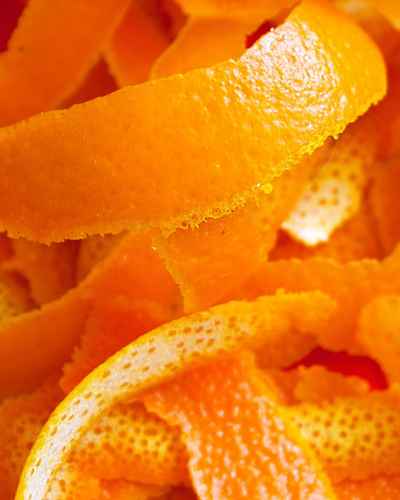
Orange is another citrus fruit often used as a botanical in Gin. The orange peels most often come from Spain, with Seville oranges and Valencia oranges being predominant.
Seville orange peels are typically used in dried form and are known for their slightly bitter taste. Peels from Valencia oranges, on the other hand, are sweeter and used fresh.
Gin that has a noticeable orange flavor: Many classic Gins like Hayman's or Beefeater have a distinct orange note in their flavor profile. Our recommendation is to try one of these. For a more intense orange flavor, go with Tanqueray's Flor de Seville. This Gin uses orange peel and orange blossom to create a beautiful citrussy flavor mix.
Cardamom
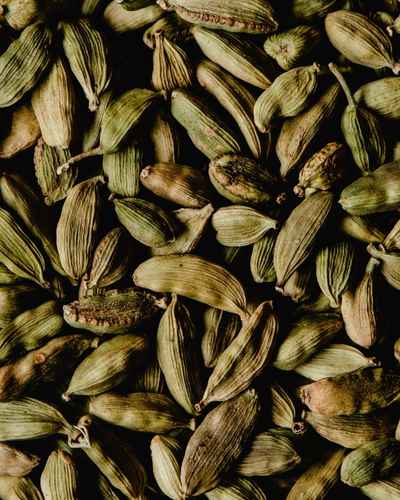
Cardamom pods are available in black and green, each filled with tiny black seeds. Typically, green cardamom is used to flavor Gin as it's more delicate and adds a hint of eucalyptus to the flavor profile.
In general, cardamom in Gin is pungent and spicy, with slightly citrusy and grassy notes.
Gin that has a noticeable cardamom flavor: If you're looking for a Gin that brings in a strong cardamom kick, try Opihr Gin or 209 Gin. Opihr Oriental Spiced Gin contains a lot of spicy notes, with cardamom being detectable in the nose and on the palate.
In 209, the cardamom note is not as distinct as in Opihr but still well palpable. The nose and palate are both quite citrusy, with a beautiful spice mix in the background that reveals juniper, coriander, and cardamom.
Licorice
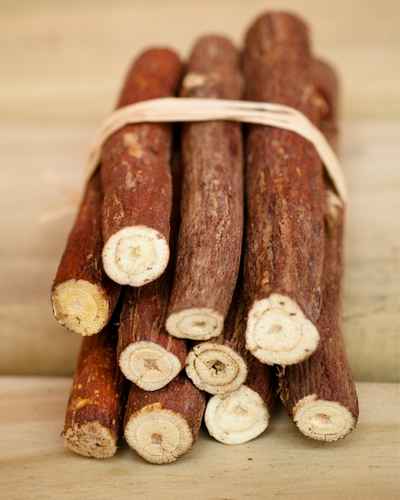
Here, the root from the licorice plant is what we need. This root is ground into a powder which is added to the base spirit. Obviously, licorice root brings flavors of licorice to Gin. If you're not familiar with it - I can best describe it as bittersweet, wooden, and earthy, similar to anise.
The flavor of licorice also doesn't change much when distilled and is usually quite notable. Licorice also adds an oily texture for added viscosity in the spirit.
Gin that has a noticeable licorice flavor: Try Skegness Gin or Wicked Licorice Gin to get an idea of how a strong kick of licorice flavor affects the flavor of a Gin. Then try Tanqueray's Malacca Gin for a more subtle taste of licorice.
Orris root

The bulb of the flowering plant Iris is called the orris root. These roots are used similarly to angelica roots - they marry flavors and harmonize the flavor profile.
Orris root itself tastes bitter with prominent earthy, floral, perfumey, and tea-like aromas. After distillation, orris roots keep their floral taste and develop stronger earthy and grassy flavors. However, it's hard to detect because it usually is only used in small doses.
Gin that has a noticeable orris flavor: Orris generally isn't very prominent in most Gins. However, one popular Gin that makes good use of it as a botanical is Plymouth Gin, especially in their latest product, Mr. King's 1842 Recipe. This Gin recipe dates back to 1842 and consists of only two ingredients, juniper berries, and orris root.
Cassia bark
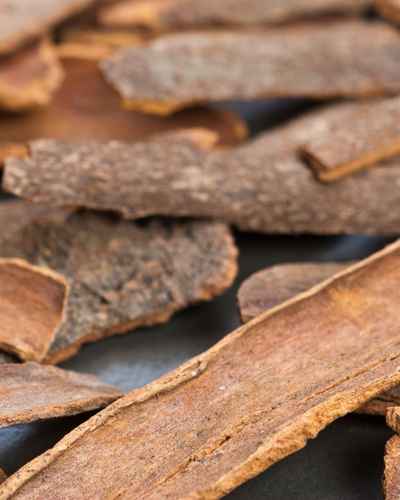
Cassia bark, or simply cassia, belongs to the family of cinnamon and is widely known as Chinese cinnamon.
The bark is harvested from trees that mainly grow in China and Vietnam but are cultivated in most Asian countries. Cassia brings a fiery spicy note to Gin along with an earthy undertone and a slight sweetness towards the finish.
Gin that has a noticeable cassia bark flavor: My best recommendation is to try Opihr Gin which contains some distinct cassia notes alongside other oriental and spicy flavors.
Cinnamon

Cinnamon is often used in Gin to add spiciness to it. It's often referred to as true cinnamon, unlike cassia, true cinnamon is typically harvested in Srilanka.
There's some confusion going on because, in the US, cassia is often sold as cinnamon. Thus, it sometimes is hard to say if cinnamon or cassia is used.
Flavorwise, cinnamon, and cassia are very similar and hard to distinguish. Yet, true cinnamon is more delicate and gentle in taste. However, distilled in Gin, that difference is more or less impossible to detect.
Gin that has a noticeable cinnamon flavor: Because the flavor is so similar to cassia bark, the same recommendation applies - Opihr Gin. Two other Gins that incorporate true cinnamon in their Gin are Bobby's Schiedam Dry Gin and Applaus Gin, a German Gin brand that uses cinnamon and rosemary as primary botanicals.
Nutmeg

The nutmeg tree is originally from Indonesia's Banda Islands, but nowadays also cultivated in other tropical Asian countries. The small and round nutmeg seeds are ground to a powder, which is added to the base spirit.
Nutmeg adds a warm note to food and brings the same warmth to a Gin, alongside a sweet and spicy flavor. In the nose, you might be able to detect its sweet, spicy, and earthy notes. On the palate, you will only get a gentle heat.
Gin that has a noticeable nutmeg flavor: One of the best options to smell the delicate nutmeg notes in Gin is Portobello Road's London Dry. They must use a relatively large amount of nutmeg in their Gin as it's surprisingly prominent.
Grains of Paradise
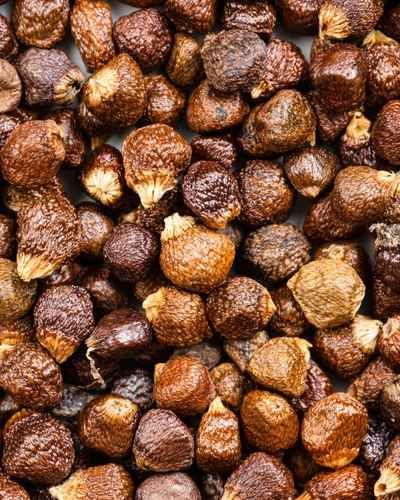
Grains of paradise are small and dark brown berries closely related to pepper. And similar to pepper, these botanicals add a hot, spicy, and peppery touch to Gin.
On top of that spicy heat, grains of paradise also bring some woody and piney notes to Gin.
Gin that has a noticeable grain of paradise flavor: It's hard to detect amidst the other flavors, but Opihr Gin offers some grains of paradise notes. Another great option to taste this unique botanical is Bombay Sapphire. If you pay close attention, you can clearly detect the grains of paradise notes in the finish.
Cubeb pepper berries

Cubeb is another member of the pepper family and originates from Java, Indonesia. The small, brown-reddish berries bring a spicy, peppery note and a sweet and floral taste.
The actual taste of this botanical varies depending on the final ABV of the spirit. The higher the ABV, the more spicy and peppery the taste. In lower ABV Gins, cubeb pepper creates a significantly softer, sweeter, and almost floral flavor.
Gin that has a noticeable cubeb berries flavor: A handful of Gins showcase the unique taste of cubeb pepper as a botanical in Gin. Bombay Sapphire is one of them, Opihr Gin, as well, and also Citadelle Gin.
Almond
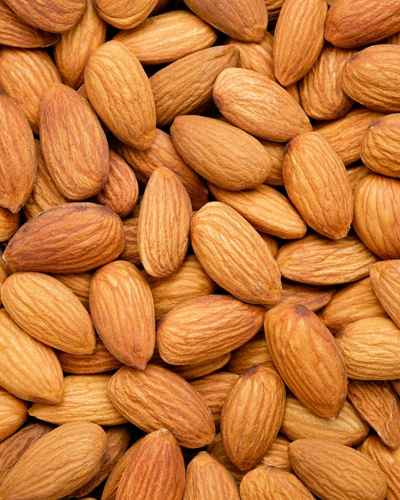
Two different types of almonds can be used as a Gin botanical - sweet and bitter. Both must be ground into a powder before using it in the base spirit.
It lends a nutty, spicy, and sometimes almost marzipan-like taste to a Gin. On top, almonds also affect the texture and mouthfeel of a Gin, making it smoother and thicker.
Gin that has a noticeable almond flavor: There aren't many Gins with a pronounced almond flavor. Instead, this nutty botanical complements other flavors and improve mouthfeel. However, if you're looking for this distinct almond and marzipan flavor, try Clemengold Gin from South Africa or Citadelle's Reserve Gin.

